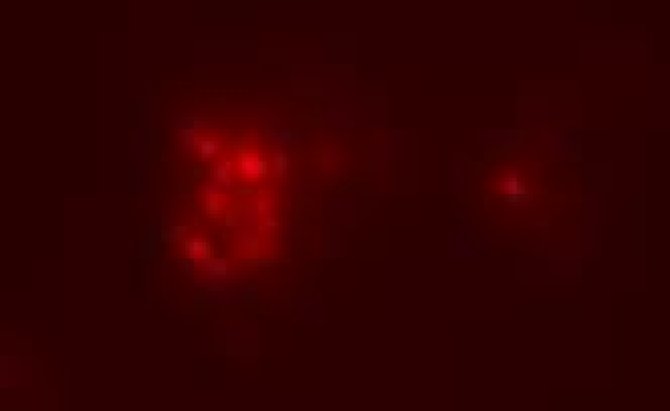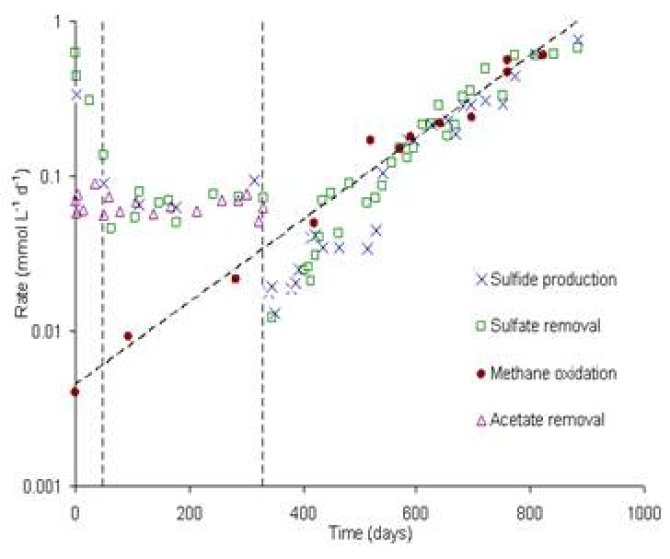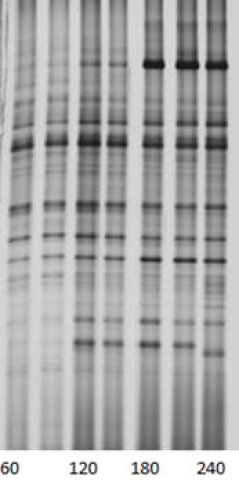Thesis subject
Anaerobic Methane Oxidation for Biological Sulfate & Sulfur Reduction
Project for Bsc/Msc students with interest in Environmental Microbiology, Biotechnology and Syntrophy.
Anaerobic oxidation of methane (AOM) coupled to sulphate reduction is widely occurring in marine sediments:
CH4 + SO42- --> S2- + CO2 + 2 H2O

The process is catalyzed by methanotrophic archaea (ANME) that form aggregates with sulfate reducing bacteria (SRB). This close syntrophic relationship benefits both organisms and they are strictly dependent on each other. This type of interaction between microbes is well studied with other species in our lab, but of this type of consortium it is still not known how the organisms interact with each other to perform this process.
The novelty of this interaction and the low energy yield of the reaction makes it a very interesting subject to study, which is reflected in the world wide interest in AOM.


In our previous research, sediment from the Eckernförde bay in the Baltic Sea was incubated in a membrane bioreactor (MBR) with methane and sulfate as sole energy sources. It produced an enrichment of ANME and SRB with an activity of 286 μmol/gdry weight/day, which is the highest AOM rate ever reported. The high AOM rate offers opportunities for industrial application in waste-water treatment of inorganic waste streams which contain sulfur compounds and/or metals.
This research is in close collaboration with the sub-department of Environmental Technology (ETE-WUR) and aims to further increase the conversion rate in the MBR. To reach this aim microbiological studies and bioreactor studies will be done to investigate the molecular biology, physiology and biochemistry of the involved microorganisms.
Techniques and methods
- Enrichment of strict anaerobic and slow growing organisms in batch
- Activity measurements using GC and HPLC
- Carbon tracking with 13C labeling
- Microscopy and FISH
- Molecular techniques such as RT-qPCR, DGGE, clone libraries, sequencing
- Membrane bioreactor systems.
Contact: Peer Timmers, Microbial Physiology, Laboratory of Microbiology Peer.Timmers@wur.nl